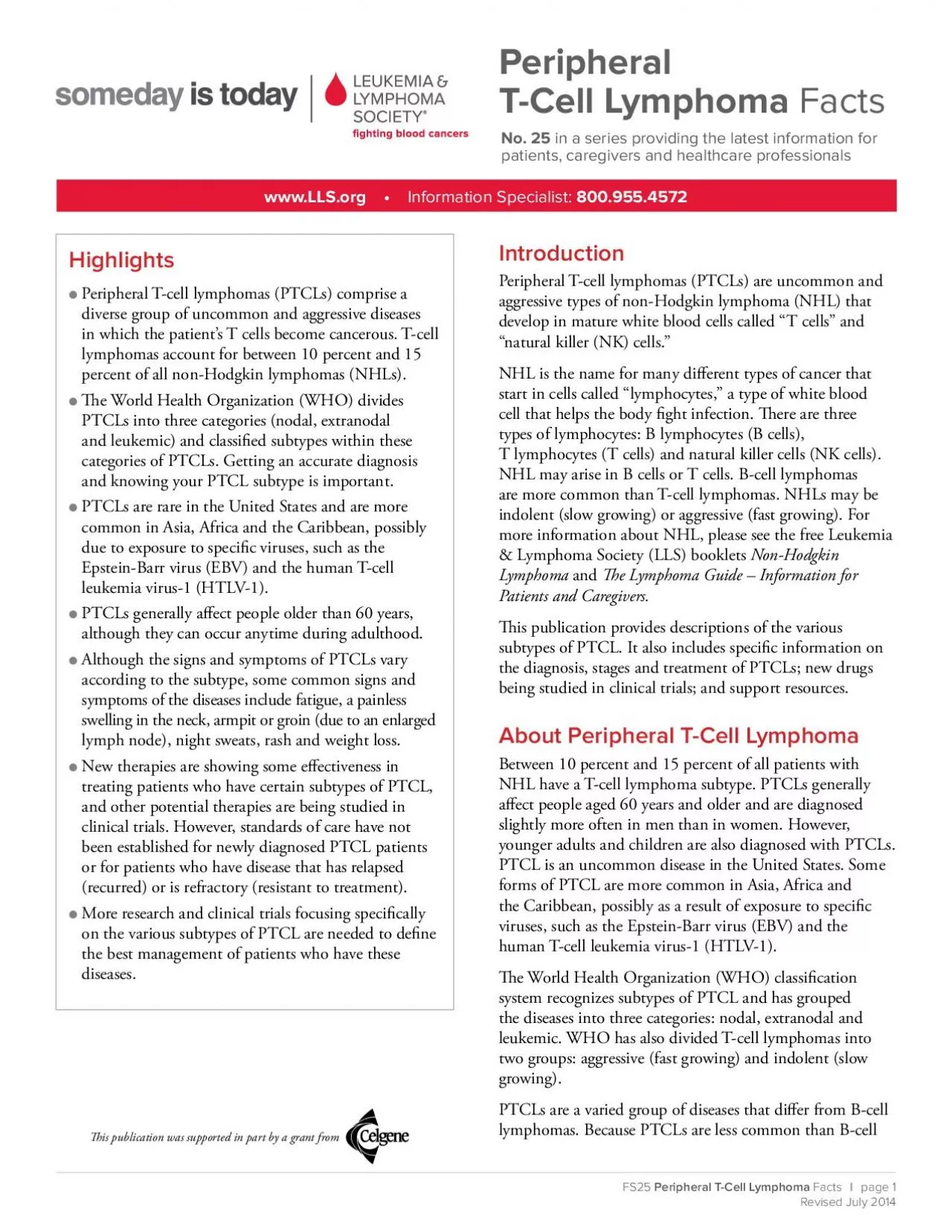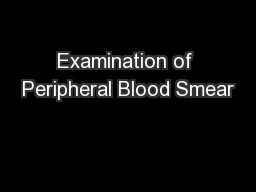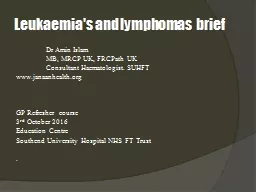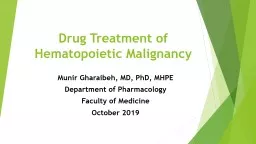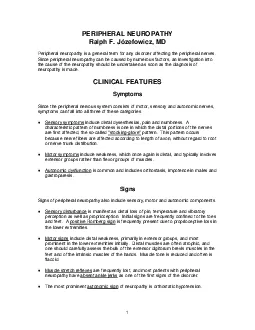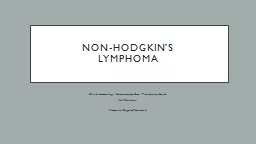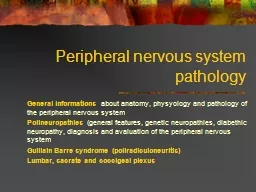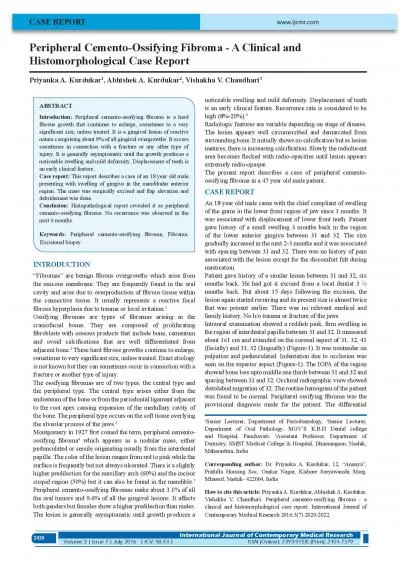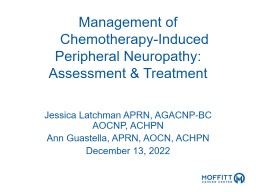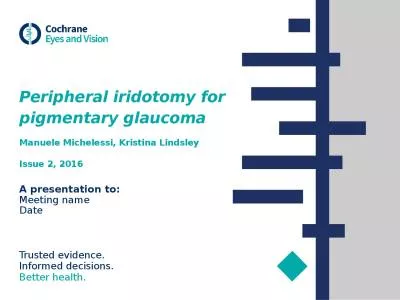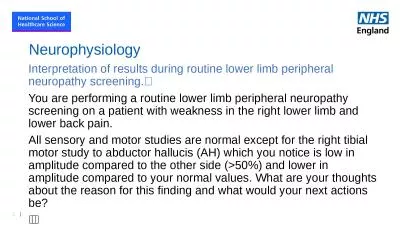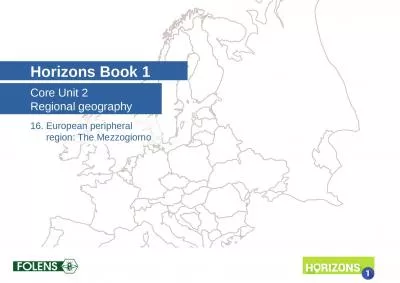PDF-Peripheral TCell LymphomaRevised July 2014Peripheral Tcell lymphomas
Author : taylor | Published Date : 2022-08-21
Peripheral TCell LymphomawwwLLSorg 8009554572 No 25 Peripheral TCell Lymphoma lymphomas they are not as well understood Techniques to distinguish and study the
Presentation Embed Code
Download Presentation
Download Presentation The PPT/PDF document "Peripheral TCell LymphomaRevised July 20..." is the property of its rightful owner. Permission is granted to download and print the materials on this website for personal, non-commercial use only, and to display it on your personal computer provided you do not modify the materials and that you retain all copyright notices contained in the materials. By downloading content from our website, you accept the terms of this agreement.
Peripheral TCell LymphomaRevised July 2014Peripheral Tcell lymphomas: Transcript
Download Rules Of Document
"Peripheral TCell LymphomaRevised July 2014Peripheral Tcell lymphomas"The content belongs to its owner. You may download and print it for personal use, without modification, and keep all copyright notices. By downloading, you agree to these terms.
Related Documents

